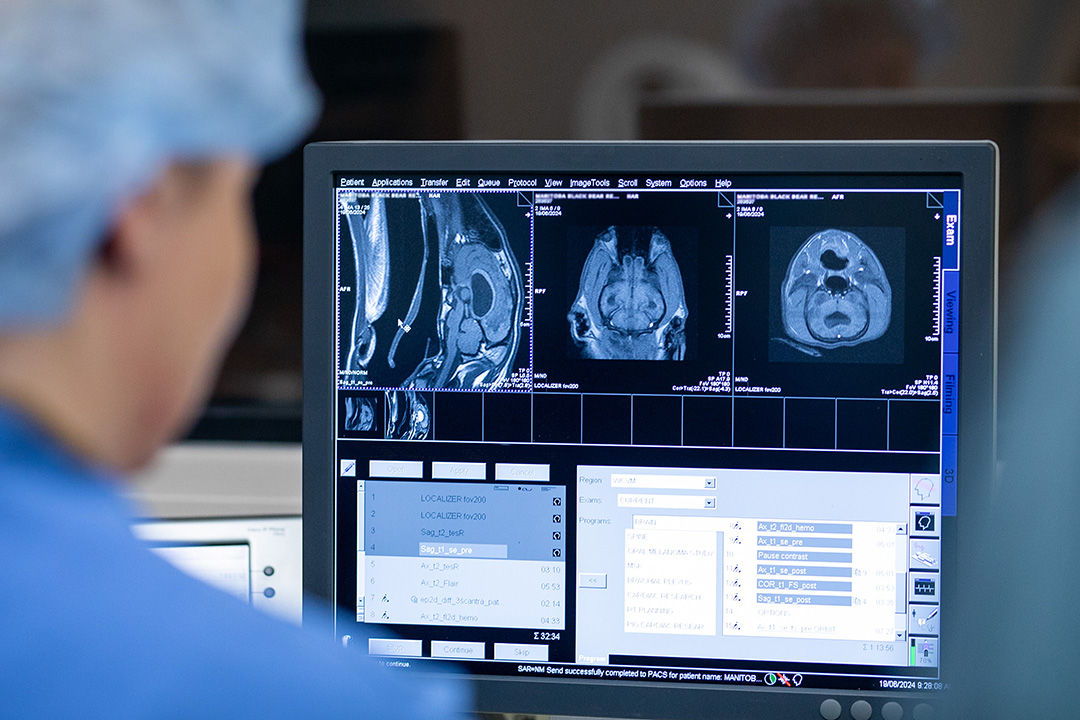
Magnetic Resonance Imaging (MRI) Unit
The WCVM and its Veterinary Medical Centre are installing a 3 Tesla (3T) magnetic resonance imaging (MRI) for clinical and research use. The new imaging technology began operating in fall 2025.
Overview
Magnetic resonance imaging (MRI) is an excellent tool for imaging soft tissues. This non-invasive imaging technology differentiates between various types of soft tissues. It also allows medical imaging specialists to determine whether soft tissue is normal or if it’s something that has abnormal characteristics such as inflammatory tissue or cancer.
New technology
An MRI unit dedicated to diagnostic services for small animal patients has been part of the WCVM Veterinary Medical Centre's (VMC) medical imaging tools for nearly two decades.
The VMC permanently shut down its existing MRI unit in October 2024 due to the machine's age. As part of the hospital's major construction project in 2025, the VMC is installing a new 3 Tesla (3T) MRI unit that is capable of delivering a variety of diagnostic capabilities and producing highly detailed images for clinical and research use.
Research use
Animal and human research
Once the WCVM's new MRI unit is operating, the advanced imaging technology will be available for animal and human research conducted by scientists at the WCVM and from other colleges and units at the University of Saskatchewan (USask). There is also potential for the equipment to be available to researchers from other universities.
Eligible research includes studies involving clinical human, veterinary or basic research. Projects may also include engineering models and non-living systems.
The VMC's renovated area for the new MRI will include a waiting room that is suitable for human subjects as well as for animals and their owners/handlers.
The WCVM and VMC are developing an MRI fee schedule that will be shared with researchers in fall 2025.

